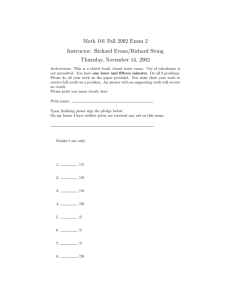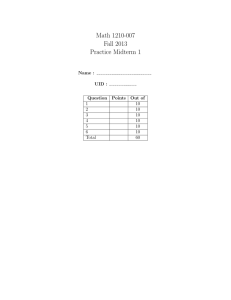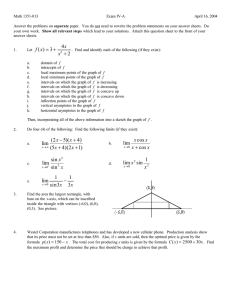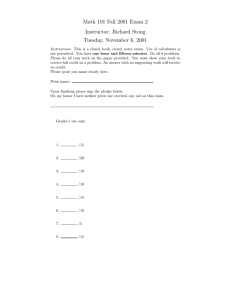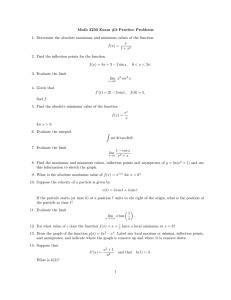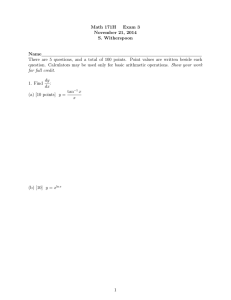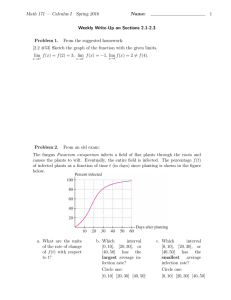Math 101 Fall 2000 Exam 2 Instructor: Richard Stong
advertisement
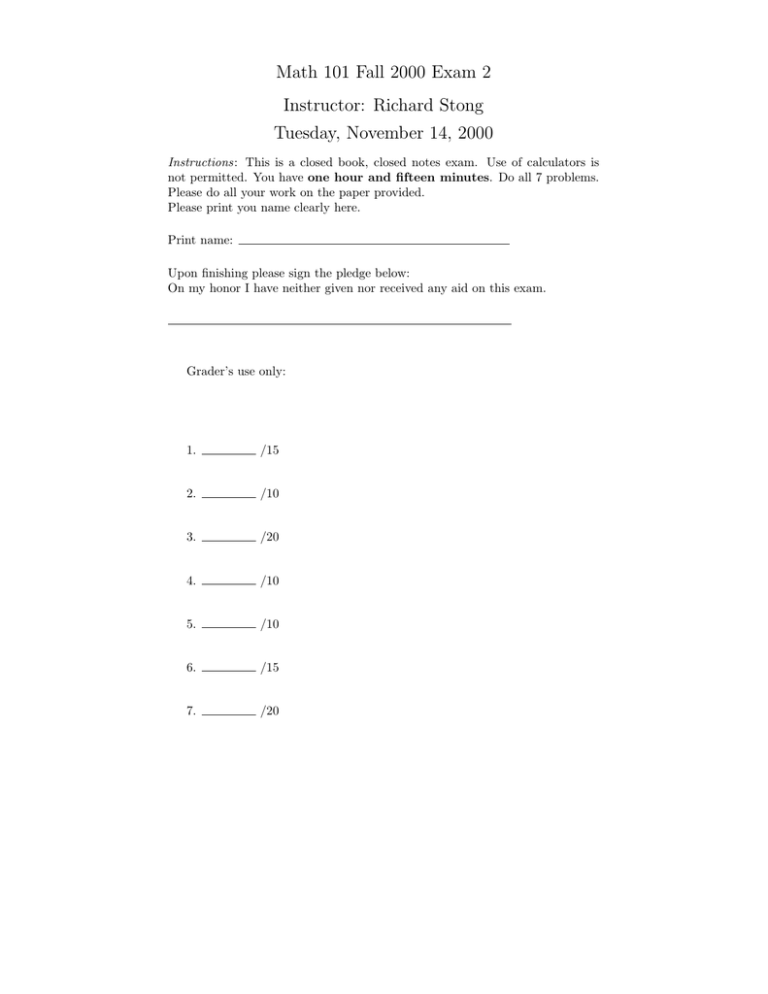
Math 101 Fall 2000 Exam 2 Instructor: Richard Stong Tuesday, November 14, 2000 Instructions: This is a closed book, closed notes exam. Use of calculators is not permitted. You have one hour and fifteen minutes. Do all 7 problems. Please do all your work on the paper provided. Please print you name clearly here. Print name: Upon finishing please sign the pledge below: On my honor I have neither given nor received any aid on this exam. Grader’s use only: 1. /15 2. /10 3. /20 4. /10 5. /10 6. /15 7. /20 1. [15 points] Find the following limits, if they exist. x2 −x−6 3 x→3 x −27 (a) lim (b) lim x→0 x−sin x x3 (c) lim (1 − x)1/(2x) x→0 2. [10 points] Calculate the first three derivatives of the following function √ g(x) = 3x − x + sin(2x) . 3. [20 points] Evaluate the following intergals. R (a) (et − 1)2 dt x2 (1−2x3 )2 dx (b) R (c) R π2 (d) R 1 √ sin √ x dx x (ln x)2 x dx 4. [10 points] Evaluate the definite integral below directly from the definition, n P that is, by computing lim f (xi )∆x for a regular partition of the given n→∞ i=1 interval of integration. Z 0 2 (2x2 + 1)dx 5. [10 points] Find the average value of the function f (x) = cos(x/2) on the interval [0, π]. 6. [15 points] Find the area of the region in the plane bounded by the curves y = x + 6 and y = x2 . ex x−1 , the (x2 −4x+5)ex . YOU (x−1)3 7. [20 points] For the function f (x) = 0 (x−2)ex (x−1)2 00 first two derivatives are f (x) = and f (x) = ARE NOT REQUIRED TO VERIFY THESE FORMULAS. For all other aspects of this problem you are required to justify your answer. (a) Find all horizontal and vertical asymptotes of the graph y = ex /(x−1). Be sure to give the limits you need to show these are asymptotes. (b) Find the open intervals on which the function f is increasing and those on which it is decreasing. (c) Find all critical points of f (x) and determine whether they are local maxima, local minima or neither. Justify your answer. CONTINUED ON NEXT PAGE (d) Find the intervals on which the function f is concave upward and those on which it is concave downward. x e using your answers to parts (a)-(d) and (e) Sketch the graph of y = x−1 any additional information required.
